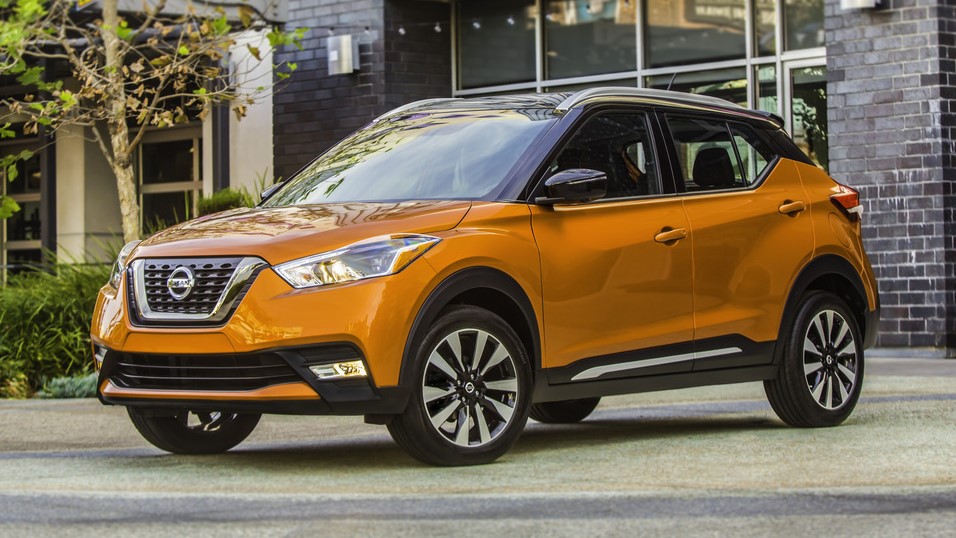A nifty tire pressure feature on the 2019 Nissan Kicks is a sign of future innovation

The idea of technology making life easier and simpler is sometimes a lost art. Over the last few decades, we’ve witnessed an explosion of new tech features, settings on our phones, laptops with extra screens, widgets and apps that can do everything... and nothing.
It’s overwhelming because innovation has reached a fever pitch. In the modern home, the front door, back door, side door, windows, lamps, thermostat, and everything in between are connected, so it can become a full-time job monitoring everything.

That’s why I like a simple new feature on the 2019 Nissan Kicks. On some cars, the tire pressure warning system is designed to annoy you. A small icon appears but there’s no information about how low the tire really is or which one needs air. It’s also merely a warning, so it doesn’t help you solve the problem. On many cars, the icon is also a bit cryptic.
On the Kicks, if you see visually that a tire is low or suspect there is a tire pressure issue, you can go to a gas station and start filling a little. The Kicks will sound the horn when you have filled up the tire enough. No extra warnings, no need to read the tire pressure level (which at most gas stations is not possible anyway), and no need to use a tire pressure gauge.

What I liked about this is that it’s a feature designed for overwhelmed drivers. Easy-Fill Tire Alert is a nod to how people actually solve problems in the real world, and it’s a sign of how things will work in the near future on all cars. I noticed a similar change with Apple CarPlay recently, adding panels to the display rather than a row of icons to help drivers access features faster.
The art of simplicity
In the future, we’ll be summoning our cars from across town, making commands by voice to start the engine or roll down the windows, and asking a bot for analytics data about how we drive and how we could take different routes. I don’t mean this is coming within 10 years – these features are imminent. You can already summon a Telsa Model S in a parking lot.
The problem is in knowing what you can do and can’t do, and little things like tire pressure just add to the confusion. I know of drivers who get a little freaked out when the tire pressure icon appears on the dash – now imagine what will happen when they say the wrong thing to a car.
Sign up for breaking news, reviews, opinion, top tech deals, and more.

The solution is to make the technology do the hard work and to understand what the driver really needs, to parse out any extraneous information. Artificial intelligence in its best form only provides the help we need; in its worst form, it is distracting and exists to annoy us.
As humans, we shouldn't be in the role of constant monitoring. Many of us use our phones in a predictable pattern each day (and multiple times per day). We check Facebook, we check email, we check Twitter, we check for new texts. In a car, extra features are not only distracting and could cause an accident, it also leads to more stress and confusion for the driver.

What’s an example of solving this problem? Eventually, voice commands will expand far beyond controlling the radio. We’ll ask the car about diagnostic info, and when it comes to making repairs ourselves, the car might walk us through that (so more than just a beep). More than anything, the bots in a car will hopefully fix problems, drive the car more efficiently, and in general, stay out of our way so we can enjoy a summer day. That’s the real goal.
On The Road is TechRadar's regular look at the futuristic tech in today's hottest cars. John Brandon, a journalist who's been writing about cars for 12 years, puts a new car and its cutting-edge tech through the paces every week. One goal: To find out which new technologies will lead us to fully self-driving cars.

John Brandon has covered gadgets and cars for the past 12 years having published over 12,000 articles and tested nearly 8,000 products. He's nothing if not prolific. Before starting his writing career, he led an Information Design practice at a large consumer electronics retailer in the US. His hobbies include deep sea exploration, complaining about the weather, and engineering a vast multiverse conspiracy.